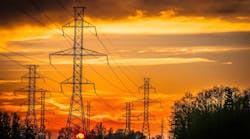When you open the webpage, you are greeted by a video featuring a talking cartoon electric vehicle (EV) that is, of course, named “Eevie.” Eevie comes complete with green headlight “eyes” and a radio antenna that is bent into the shape of a green heart. The video involves other characters such a “hip mom” named Kate and “a guy’s guy” named John. There is also an adorable slobbering dog named Moose, who is pictured enjoying his owner’s EV by sticking his head out of an open window while his owner drives down a country road flanked by boundless trees. If this seems a bit cheesy to you, well, you are clearly not the targeted market segment.
In the professionally made video, Eevie explains in simple and straightforward terms the benefits of the promotion being offered. The remainder of the webpage provides slick content and graphics that concisely explain the program, discusses who does and does not qualify for the promotion, and describes how a person can take advantage of the exclusive offer. The final shot on the page shows Eevie presumably driving away with the caption: “Follow me to a better future.”
Without seeing the webpage and absent any additional information, a person might think the webpage just described belonged to an EV dealer, or possibly an EV trade organization, or even perhaps a high-tech company promoting advanced EV chargers. You might be able to name many more organizations and still miss the actual webpage owner. It might be surprising to find out that the webpage is part of a marketing effort for an electric cooperative.
I am not saying that electric co-ops aren’t creative. To the contrary, electric co-ops frequently lead the industry in offering innovative programs to their owner-members. It is just that utilities, in general, aren’t known for such slick efforts. Utilities are also not known for targeting specific market segments either. The attention-getting aspect of this marketing effort is that it could easily have come from any number of consumer-facing companies. The content and presentation clearly indicate that the program was designed for a particular market segment on which the co-op has done its research. The co-op involved is Great River Energy (GRE), a generation and transmission co-op in Minnesota with 28 local distribution co-op members. The program being offered to EV owners is called “Revolt.” Revolt is designed to allow some 1.7 million people the opportunity to charge their EVs with 100% wind energy at no extra charge. The program is for the life of the vehicle.
That’s right, it’s a vehicle lifetime offer, and GRE customers don’t have to pay a premium to get the “green” stuff they want. What is also impressive is the number of moving parts GRE has brought together to create value for its owner-members and for the grid. Many renewable and energy-efficiency programs tend to have a single focus. Not here. First, GRE is clearly pitching EVs and would like more customers to buy them and connect them to the grid. GRE is using renewable energy to make EVs more attractive.
How did they know EV owners would want to fuel their EVs with green electrons? They asked them.
Speaking to Utility Dive, GRE Senior Marketing Specialist David Ranallo said, “EV owner-members told us they look for the environmental benefit when they switch from an internal combustion engine, so we decided our promotion needed to be tied to that.”
EV customers have another kind of green incentive. Some of GRE’s distribution co-ops have time-of-use rates that will allow lower charging costs when EVs are charged at night. This will make the EV energy cost even more attractive when compared to gasoline-powered vehicles.
If GRE is selling wind energy to EVs at no additional charge, what is in it for the utility? First, if EVs catch on, they will be a source of positive load growth at a time when much of a utility’s load may be in decline because of energy efficiency and rooftop solar.
Second, encouraging nighttime charging matches this EV load with wind production that typically is stronger at night. It also means the EV load would fill in the nighttime load valley when wholesale power prices are lower.
Finally, but far from least, this program allows GRE to engage its customers at a time when so many third parties are inserting themselves between utilities and their customers. GRE has accomplished this by giving customers what they want. As the EV market matures, will wind-made green energy always be as important to EV buyers? Or, as with most new product introductions, will the round of buyers after the early adopters put cost, EV range or other product attributes on a more equal footing with green energy?
Time will tell the tale, but for now, GRE definitely has early adopters squarely in its sights and seems to clearly understand the segment to which it is selling.
Editor’s note: To see what Great River Energy is doing, please visit www.energywisemn.com/revolt.


